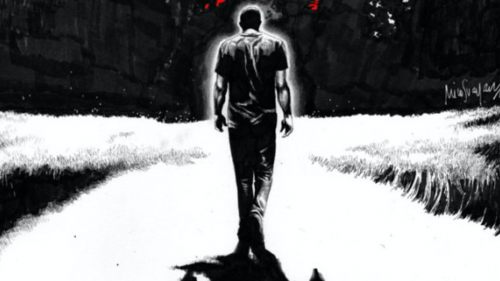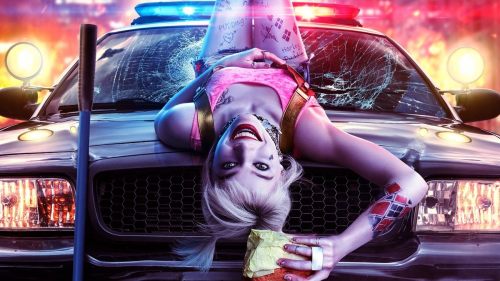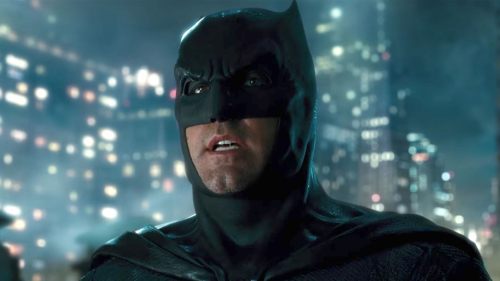HARLEEN And BREAKING GLASS: Two Very Different Looks At Harley Quinn
Birds of Prey is almost here. Get your tickets now! And while we're at it, have you ordered your copy of the Spring 2020 issue of Birth.Movies.Death. magazine yet?
CONTENT NOTE: This article, and the comics it features, discusses violence and the effects of mental and emotional abuse and trauma.
FAIR WARNING: There will be spoilers ahead for Harleen and Harley Quinn: Breaking Glass.
One of the marks of a great superhero character that they strike a balance. Specifically, a balance between maintaining a strong core concept and being flexible enough to incorporate new ideas and interpretations. Take Batman, for instance. Batman will always be the result of a child surviving immense trauma and tragedy and subsequently reacting to it in adulthood. But there are so many forms that reaction can take. He’s been a world-weary anti-hero who gets back into the game as much in search of a good death as any desire to do good. He’s been a deeply kind and compassionate man who does not want anyone else to have to face what he faced as a child. And he’s been just about everyone and everywhere in between. Those same key qualities – a clearly-defined core coupled with significant space for creative interpretation, are also found in a few of the Caped Crusader’s greatest foes.
Case in point, Harley Quinn. First created by Paul Dini and Bruce Timm for Batman: The Animated Series, the wicked queen of jesters is one of Western cape comics’ most beloved villainesses/anti-heroines. At her core, Harley is defined by a deep empathy that has warped into callousness and cruelty, a romantic obsession with the Joker, a pronounced zaniness and a decent streak she has never completely extinguished. And there is a genuine smorgasbord of ways her character can develop working from those key aspects. With Birds of Prey (and the Fantabulous Emancipation of One Harley Quinn) hitting theaters this week, I’d like to shine a light on two recent Harley Quinn comics – Stjepan Šejic’s DC Black Label (aimed at grown readers and with the rough equivalent of an R-rating) miniseries Harleen and Steve Pugh and Mariko Tamaki’s DC Ink (aimed at young adults, with the rough equivalent of a fairly hard PG-13-rating) graphic novel Harley Quinn: Breaking Glass. They’re both darn good books, and both are new interpretations of her origin story. But in tone and form, they’re wildly different from one another. Considered together, Harleen and Breaking Glass ably demonstrate how far afield great Harley Quinn stories can be from one another, even as they remain faithful to her core character.
HARLEEN:
Harleen is a super-villain origin story played as a tragedy. Over the course of three issues, Stjepan Šejić (Death Vigil) follows the former Dr. Harleen Quinzel as she looks back on her descent into evil during a brief moment of clarity. Once, she was a deeply empathetic psychologist, determined to help bring the notorious rogues of Gotham back to wellness. She was also desperately lonely, deeply cynical and guarded to an outright self-destructive degree. She would sooner drive a spike through her soul than tell someone she was struggling:

A chance encounter with the Joker that Quinzel survived unharmed left her fascinated with him. As they worked together, Quinzel’s fascination deepened into an obsession. Not only was the Joker potential proof of her theory that prolonged exposure to scenarios in which “empathy may be a liability” (such as professional criminal activity) could potentially damage the mind’s ability to feel empathy at all, he was open and vulnerable with her. And she in turn felt she could be open and vulnerable with him – in a way that she had not been able to be for a very long time. Joker-the-patient, Joker-the-confidant and ultimately Joker-the-lover spiraled together to become all-consuming and all-important to Quinzel – just as he had planned. By Harleen’s end, the titular protagonist’s empathy and desire to heal are left a sour, horrific parody of themselves:

Šejić’s take on Harley Quinn emphasizes her warped empathy. She cares deeply for the Joker – at the expense of everyone up to and including herself. But as far gone as Quinn is, she has not completely lost herself. Indeed, Harleen is framed as a brief, but recurring moment where she grasps who she has become and what she has done and is appalled by both. Her zaniness is mostly seen in the brief portions of the book set in the present, and it is presented as a disturbing coping method more than anything else.
HARLEY QUINN: BREAKING GLASS:
Breaking Glass is an ultimately triumphant coming-of-age story for its eccentric heroine. Artist Steve Pugh (The Flinstones) and writer Mariko Tamaki (Supergirl: Being Super)’s Harleen “Harley” Quinzel is a big-hearted, cheerfully goofy teenager with a frighteningly violent streak. At her best, Harley steps up to do what’s right for those she cares about – in particular her caretaker Mama and her best friend Ivy – in ways that only she could:

At her worst, Harley indulges in destruction and violence for the satisfaction of it – giving no thought to its further consequences for herself and the people she cares about beyond something she dislikes being blown up. When her efforts to prevent Mama’s drag cabaret from being shut down by a particularly ruthless band of gentrifiers lead her to cross paths with a self-described revolutionary/malignant twerp who calls himself the Joker, Harley’s personal conflict is made clear. Does she do the work – the long, slow, sometimes fraught work of building a better world alongside Ivy? Or does she throw everything else to the wind and call setting off a bomb to set off a bomb a heroic act?
This Harley’s youth enables Tamaki and Pugh to play with her character in some really interesting ways. Her zaniness is an innate part of her identity, rather than something she developed as part of the “Harley Quinn” persona. Her having close and active relationships with a loving parental figure and a best friend who challenges her to be good grounds her empathy in specifics. The Joker’s faux anarchist rhetoric is tempting to Harley. But what she’s learned of the world from knowing Mama and Ivy means that, while she may not have her older counterparts’ degree in psychology, she can ultimately recognize Breaking Glass’ Joker as the empty, hateful brat that he is.
Tamaki and Pugh close Breaking Glass with the beginning of the next phase of Harley Quinn’s life. As she herself puts it in a letter to Mama “I don’t get all of it but I feel like I get a little more than I did a month ago. …I know that there are Jokers. There are people who will do anything to get what they want… I might not know what I am but I know what I have to do.” She sets out to hunt the Joker – not to get payback for using her as a cudgel, but to see that he answers for trying to murder the people she loves, and to keep him from hurting anyone else. The Joker imagines that other people are nothing more than his playthings. Harley’s response finishes her story in Breaking Glass on a full-blown super-heroic note:




